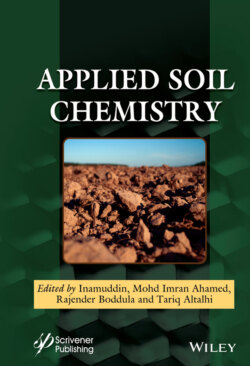Читать книгу Applied Soil Chemistry - Группа авторов - Страница 43
2.2.1 Heavy Minerals
ОглавлениеAccording to Pettijohn et al., in the year 1941 [28–30], reported rocks whose age was increasing included decreasing quantity of higher specific gravity minerals having less stability. Hence, among rocks which are older in comparison to Pleistocene, olivine was not included. The weathering sequence given by Pettijohn in the order of increasing order of stability includes (most unstable mineral first), olivine (22), actinolite (21), diopside (20), hypersthene (19), sillimanite (18), augite (17), zoisite (16), sohene (15), topaz (14), andalusite (13), hornblende (12), epidote (11), kyanite (10), staurolite (9), magnetite (8), ilmenite (7), apatite (6), biotite (5), garnet (4), monazite (3), tourmaline (2), zircon (1), rutile (−1), muscovite (−2), and anatade (−3). The last three minerals with negative numbers shows formation tendency instead of disappearance at the time of prolonged burial. According to Weyl et al., in the year 1952 [1], it was suggested to classify four groups of heavy minerals according to their relative stability. The very stable group included magnetite titanite, rutile, zircon, and tourmaline. The slightly stable group included epidote and garnet. The most unstable minerals included augite, hot blende, and olivine. The above discussion shows way how heavy minerals stability could be used for establishing rock formation age, out of which soil was formed.
